As we roll into 2025, Enhanced Labs makes its long-awaited return to the supplement industry with a complete relaunch of their line – and they're doing it with some serious innovation. Their newest fat burner, Enhanced Labs Shred, leads the charge by featuring novel ingredients from Aura Scientific, positioning itself as a next-generation thermogenic supplement that brings both better efficacy and improved experience.
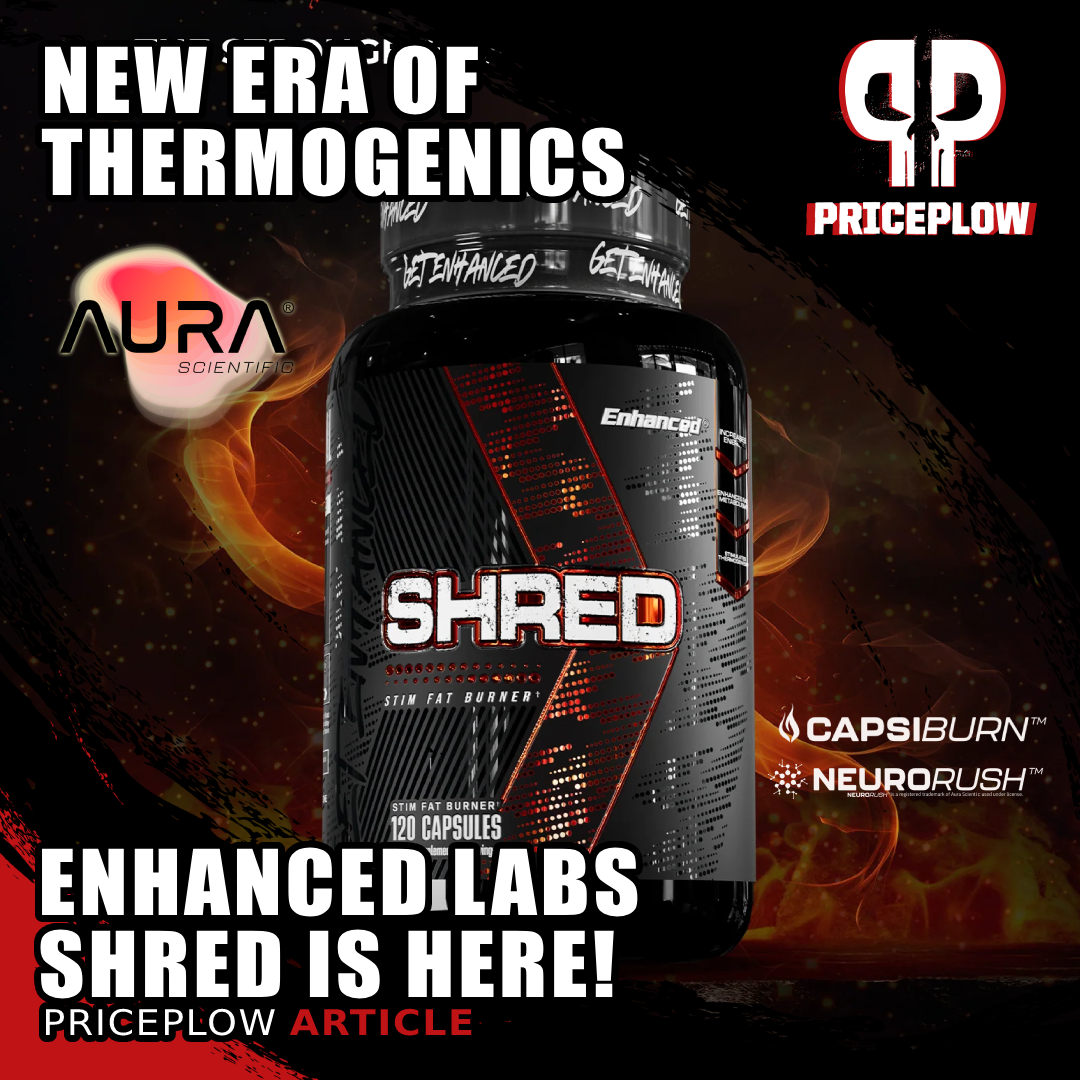
Enhanced Labs makes their comeback with Shred, a next-gen fat burner using Aura Scientific's NeuroRush & CapsiBurn for better results & improved experience. Paired with ~250mg caffeine, ALCAR, naringin & more for a complete thermogenic formula.
Building upon the early success of their Top T test booster, which features two other Aura Scientific ingredients (ProtoTest and EndoFlo), Shred incorporates both NeuroRush and CapsiBurn alongside a comprehensive matrix of proven fat-burning ingredients. The formula delivers a perfect blend of clean energy, appetite control, and thermogenic support – but with some unique twists we haven't seen combined anywhere else.
Thanks to NeuroRush's chlorogenic acid-standardized coffee fruit extract and CapsiBurn's innovative CLA-encapsulated delivery system, you get an entirely new kind of fat burning experience – one that's both potent and easier to tolerate than traditional thermogenic supplements. And as if that weren't enough, NNB Nutrition's CaloriBurn GP is also added for even more spice.
There's ~250mg total caffeine in four capsules, as well as both theacrine and synephrine (from Advantra Z) inside, and that's just getting started.
This product is stacked. Get ready for the next chapter in Enhanced Labs' story by signing up for their alerts, but don't miss any of the innovation coming from Aura Scientific either:
Subscribe to PricePlow's Newsletter and Alerts on These Topics
Enhanced Labs All Day Shred (Stim-Free) – Deals and Price Drop Alerts
Get Price Alerts
No spam, no scams.
Disclosure: PricePlow relies on pricing from stores with which we have a business relationship. We work hard to keep pricing current, but you may find a better offer.
Posts are sponsored in part by the retailers and/or brands listed on this page.
This area is reserved for Team PricePlow's upcoming videos.
Subscribe to our channel and sign up for notifications so you catch it when it goes live!
Enhanced Labs Shred Ingredients
In each 4-capsule serving of Enhanced Labs Shred, you get:
-
Acetyl-L-Carnitine - 500mg
Enhanced Labs Shred opens with Acetyl-L-Carnitine (ALCAR) at a 500mg dose. While this isn't the highest dose we've seen, it's enough to provide meaningful benefits, especially when combined with the formula's other metabolic enhancers.
ALCAR is a more bioavailable form of L-carnitine that can readily cross the blood-brain barrier, providing both cognitive and fat-burning benefits.[1] The acetylated version is generally considered superior to standard L-carnitine for overall bioavailability.[2]
L-carnitine's primary mechanism involves shuttling long-chain fatty acids into mitochondria where they can be oxidized ("burned") for energy.[3] This process is essential for efficient fat burning, making ALCAR a sensible inclusion in any serious fat loss formula.
Beyond its fat-burning properties, ALCAR provides nootropic benefits that complement Shred's energy blend, helping to maintain mental clarity during caloric restriction.[1] It may also help reduce exercise-induced muscle damage and improve recovery, which is particularly valuable when training in a caloric deficit.[4]
-
Naringin (from citrus fruit) (standardized to 98% Naringin) - 500mg
Enhanced Labs didn't skimp on the naringin, providing a clinically-relevant 500mg dose standardized to 98% purity. Found naturally in citrus fruits like grapefruit, naringin is a flavonoid that packs some serious metabolic power – especially at this dose, which is much greater than anything we've seen.
Research has shown that naringin can help support weight loss through multiple mechanisms. At its core, naringin works by activating AMPK, a critical metabolic "master switch" that helps regulate both fat burning and energy expenditure.[5]
Enhanced Labs Top T is raising the bar with ProtoTest and EndoFlo, two cutting-edge ingredients from Aura Scientific.
In clinical research, naringin supplementation has been shown to reduce body weight and body fat percentage while increasing adiponectin levels – a hormone that helps regulate metabolism.[6]
The compound also supports healthy blood sugar levels by enhancing insulin sensitivity and modulating key enzymes involved in glucose regulation.[7]
What's particularly interesting about Enhanced Labs' formulation is the hefty 500mg dose – significantly higher than what we typically see in supplements. This aligns well with clinical research showing benefits at doses between 400-500mg per day, suggesting Enhanced Labs is serious about providing efficacious amounts rather than just window dressing.
When combined with the formula's other metabolic enhancers like CapsiBurn, green tea extract, and CaloriBurn, naringin's effects on fat metabolism and glucose regulation make it a smart addition to this comprehensive weight management formula.
-
Green Tea Extract (camellia sinensis) (std. to 50% EGCG) - 300mg
Next up is a solid 300mg dose of green tea extract standardized to contain 50% EGCG (epigallocatechin gallate), providing 150mg of this powerful catechin. This evidence-based dose works synergistically with the formula's other thermogenic ingredients.
Green tea extract's fat-burning properties come from multiple mechanisms. The catechins, particularly EGCG, inhibit an enzyme called catechol-O-methyltransferase (COMT), which normally breaks down catecholamines like norepinephrine.[8] This leads to increased thermogenesis and fat oxidation, with research showing green tea extract can boost daily energy expenditure by 4-5% and fat oxidation by 10-16% over 24 hours.[9]
Beyond direct fat-burning effects, green tea extract has been shown to improve insulin sensitivity, support healthy blood sugar levels, and provide powerful antioxidant benefits through its catechin content.[10] When combined with caffeine, as it is in this formula, these effects are typically enhanced further.
-
Garcinia Cambogia (std. to 50% Hydroxycitric Acid) - 250mg
Enhanced Labs includes a standardized garcinia cambogia extract providing 125mg of hydroxycitric acid (HCA) per serving. While there are larger doses in pure garcinia supplements, this works synergistically with the formula's other metabolic-supporting ingredients.
HCA, the primary active compound in garcinia cambogia, has been shown to help reduce body weight and fat mass through multiple mechanisms. It works primarily by inhibiting ATP-citrate lyase, an enzyme that plays a key role in converting carbohydrates into stored fat.[11]
Beyond its effects on fat storage, HCA may help control appetite by increasing serotonin availability in brain tissue.[12] This dual action on both metabolism and hunger makes it a valuable addition to Shred's comprehensive formula.
Recent research also suggests that HCA can enhance glycogen synthesis in exercised muscle tissue, which may help improve exercise performance and recovery during caloric restriction.[13] When combined with the formula's other thermogenic compounds like CapsiBurn, CaloriBurn, and green tea extract, garcinia provides complementary pathways for supporting healthy weight management.
-
Caffeine Anhydrous - 225mg (of ~250mg total caffeine)
Stim time! Shred uses 225mg of caffeine anhydrous as its primary stimulant, providing most of the formula's ~250mg total caffeine content (with additional caffeine coming from guarana extract). This moderate dose strikes an excellent balance between effectiveness and tolerability for most users.
Caffeine anhydrous is a highly purified, dehydrated form of caffeine that tends to be absorbed more quickly and efficiently compared to caffeine from coffee or tea.[14] This faster absorption can lead to more rapid onset of its performance-enhancing effects.
Multiple mechanisms contribute to caffeine's fat-burning effects. Research has shown that caffeine increases fat oxidation by enhancing the release of catecholamines like epinephrine, which helps mobilize fatty acids from fat tissue.[15] Studies indicate that caffeine can increase free fatty acid availability and fat oxidation between 10-29% during exercise.[16]
At this dose, caffeine has been shown to increase metabolic rate and fat oxidation, while also improving exercise performance and mental focus.[14] Research indicates that caffeine doses between 3-6mg/kg body weight are optimal for enhancing thermogenesis and exercise capacity.[17]
When combined with the formula's other stimulants and thermogenic compounds, this dose of caffeine anhydrous helps create a comprehensive fat-burning environment while maintaining a reasonable total stimulant load that most users can tolerate well.
-
CapsiBurn™ (Cayenne Pepper [Capsicum annuum] Fruit Extract, Tabasco Pepper [Capsicum Frutescens] Fruit Extract, Conjugated Linoleic Acid) - 100mg
Enhanced Labs Shred features CapsiBurn™, Aura Scientific's innovative thermogenic ingredient that combines both cayenne and tabasco pepper extracts in a novel CLA-based delivery system. This dual-source approach provides a more complete capsaicinoid profile while addressing the traditional challenges of capsaicin supplementation.
Research has consistently shown that capsaicinoids can enhance metabolic rate and fat oxidation through multiple mechanisms. Clinical trials demonstrate that capsaicin supplementation can increase energy expenditure by approximately 50 calories per day.[18] This effect appears most pronounced in individuals with higher BMIs, suggesting particular relevance for those actively managing their weight.[19]
Capsaicinoids work primarily by activating TRPV1 receptors, which triggers a cascade of metabolic effects including increased energy expenditure and enhanced fat oxidation.[20] Studies have shown that capsaicin supplementation can reduce respiratory quotient, indicating a shift toward greater fat utilization as an energy source.[21]
Aura Scientific introduces CapsiBurn, combining cayenne and tobasco peppers in a novel CLA coating for improved thermogenic effects. The unique delivery system maintains capsaicin's benefits while reducing GI discomfort - bringing innovation to fat-burning supplements.
What makes CapsiBurn unique is its innovative delivery system. Traditional capsaicin supplements often cause gastrointestinal discomfort and can be difficult to manufacture due to their intense pungency. CapsiBurn solves these challenges by encapsulating both cayenne and tabasco pepper extracts in conjugated linoleic acid (CLA). This not only improves tolerability but also makes the ingredient easier to work with during the manufacturing process.
The inclusion of both cayenne and tabasco peppers provides a broader spectrum of capsaicinoids compared to single-source extracts. While cayenne pepper is traditionally used in thermogenic supplements, the addition of tabasco pepper (Capsicum frutescens) introduces additional bioactive compounds that may contribute to the overall thermogenic effect.
At 100mg per serving, CapsiBurn delivers clinically-relevant amounts of capsaicinoids without overwhelming the system. Research suggests that even modest doses of capsaicin (2-3mg) can significantly impact energy expenditure and fat oxidation.[22] The CLA encapsulation system helps ensure consistent delivery of these active compounds while minimizing potential gastrointestinal issues.
When combined with the formula's other thermogenic ingredients like CaloriBurn and green tea extract, CapsiBurn helps create a comprehensive approach to metabolic enhancement. The ingredient's ability to promote fat oxidation while being easier on the stomach makes it an excellent addition to Enhanced Labs Shred's cutting-edge formula.
-
Cinnamon Bark Extract [Cinnamomum zeylanicum] (Bark) - 100mg
For blood sugar support, Shred includes 100mg of Ceylon cinnamon bark extract in Shred, providing a smart addition to its comprehensive metabolic support formula. While many may think of cinnamon simply as a tasty spice, research has shown it can play a meaningful role in supporting metabolic health through multiple mechanisms.
Studies indicate that cinnamon may help improve insulin sensitivity, as its bioactive compounds have been shown to enhance insulin receptor function and inhibit insulin receptor phosphatase.[23]
Recent clinical research has demonstrated that cinnamon supplementation can support healthy blood lipid levels, with subjects showing improvements in both HDL and LDL cholesterol when supplementing with doses as low as 500mg daily.[24]
The 100mg dose in Shred works synergistically with other metabolism-supporting ingredients like CapsiBurn and green tea extract. The use of Ceylon cinnamon (Cinnamomum zeylanicum) specifically is noteworthy, as this variety contains lower levels of coumarin compared to Cassia cinnamon, making it a better choice for regular supplementation.[25]
-
Guarana Extract (Paullinia cupana)(Seed)(22% Caffeine) - 100mg (yields 22mg of ~250mg total caffeine)
Supporting more stimulation, we have 100mg of guarana seed extract standardized to 22% caffeine, providing roughly 22mg of the formula's total ~250mg caffeine content. While guarana is often used primarily as a caffeine source, research suggests it may offer additional benefits beyond its caffeine content.
Guarana is a climbing plant native to the Amazon basin that contains a complex mix of bioactive compounds including methylxanthines (caffeine, theobromine, theophylline), tannins, saponins, and flavonoids like catechins and epicatechins.[26] The combination of these compounds may work synergistically to enhance the effects on metabolism and mental performance.
Studies indicate that guarana can improve cognitive performance and reaction time even at doses containing caffeine below the threshold for physiological effects, suggesting other compounds in guarana contribute to its stimulant properties.[27]
When it comes to fat loss support, research has shown that guarana may help increase energy expenditure and metabolic rate.[28] The combination of guarana's natural caffeine content plus its other bioactive compounds makes it a smart addition to Enhanced Labs Shred's comprehensive formula.
The 100mg dose works synergistically with the formula's other stimulants while keeping the total caffeine content at a reasonable level. This allows users to get the benefits of guarana's unique compounds without excessive stimulant effects.
-
Theobromine Cacao - 100mg
Pairing with caffeine and guarana comes 100mg of theobromine from cacao, providing both thermogenic and cognitive-enhancing benefits. Theobromine is a methylxanthine compound closely related to caffeine but with some unique properties that make it particularly valuable in a fat-burning formula.
Research shows that theobromine can stimulate thermogenesis through multiple mechanisms, including inhibition of phosphodiesterase enzymes and activation of uncoupling protein 1 (UCP1) expression.[29]
Unlike caffeine, theobromine provides a smoother, longer-lasting energy effect with less of that typical crash or jitters.[30] This makes it an excellent complement to the formula's caffeine content, helping to extend the duration of its energizing effects while reducing potential side effects.
Theobromine also demonstrates beneficial effects on lipid metabolism, with research showing it can help improve cholesterol profiles by increasing HDL levels.[31] Additionally, studies indicate theobromine may help reduce inflammation and oxidative stress, supporting overall metabolic health.[32]
When combined with the other stimulants and thermogenic compounds in Enhanced Labs Shred, theobromine helps create a comprehensive approach to fat loss while supporting sustained energy levels throughout the day.
But we're not done with stimulants yet...
-
Advantra Z [Citrus Aurantium] (Extract 50%) - 100mg
To continue with the fat oxidizing stimulation, we get a substantial 100mg dose of Advantra Z standardized to 50% p-synephrine, providing 50mg of this thermogenic compound per serving. This bitter orange (Citrus aurantium) extract has been extensively studied for its effects on metabolism and fat oxidation.
p-Synephrine works primarily through β-3 adrenergic receptor activation, which helps increase lipolysis and energy expenditure.[33] Unlike many other stimulants, p-synephrine exhibits minimal binding to α-1, α-2, β-1, and β-2 adrenoreceptors, resulting in little to no cardiovascular effects at standard doses.[34]
Research has shown that synephrine can increase resting metabolic rate by up to 13% while enhancing fat oxidation during exercise.[35] When combined with caffeine like we have here, the thermogenic effects may be further enhanced, though the two compounds don't appear to have additive effects on fat oxidation.[36]
At 50mg of synephrine per serving, this represents one of the higher doses available in supplements, positioning Enhanced Labs Shred as a serious thermogenic formula - especially next to everything else we see here! The inclusion of standardized Advantra Z ensures consistent potency and reliable effects compared to generic bitter orange extracts.
-
NeuroRush® (Coffee [Coffea arabica] Fruit Extract) - 100mg
Aura Scientific's NeuroRush brings a unique form of mental vitality that works alongside Shred's caffeine content. This isn't your standard coffee extract – it's a specialized coffee fruit extract standardized for chlorogenic acids that provides both cognitive support and a unique "feel-good" effect.[37]
Research has shown that chlorogenic acid-rich coffee extracts can improve cognitive function and alertness - even without high doses of caffeine. A randomized, placebo-controlled trial demonstrated that these coffee fruit polyphenols enhanced mental performance and vigilance.[38]
Aura Scientific’s NeuroRush brings the cognitive perks of coffee without the taste! High in polyphenols like chlorogenic acid, it supports memory, focus, and steady energy by enhancing glucose metabolism and reducing cognitive fatigue. Perfect for long-lasting mental clarity.
What's particularly interesting is the mood enhancement that comes with these extracts. Studies have shown significant improvements in subjective mood states when supplementing with coffee fruit extracts – particularly when combined with modest amounts of caffeine (like the ~250mg total caffeine in Enhanced Labs Shred).[39]
The addition of NeuroRush to this formula helps create a more balanced, cleaner-feeling energy experience compared to traditional stimulant-based fat burners. It supports sustained mental clarity and focus throughout the day, which can be particularly beneficial when dieting often leads to mental fatigue.[40]
Beyond its cognitive benefits, coffee fruit extracts like NeuroRush have an excellent safety profile, making them ideal for daily supplementation.[41] This aligns perfectly with Enhanced Labs' goal of creating an effective yet sustainable fat loss formula.
-
CaloriBurn (Grains of Paradise Extract) (Aframomum melegueta) (seed) (std. 12.5% 6-Paradol) - 50mg
Anchoring the formula's thermogenic support is CaloriBurn GP, NNB Nutrition's premium grains of paradise (Aframomum melegueta) extract standardized to 12.5% 6-paradol. This spicy West African plant has emerged as an intriguing ingredient for supporting healthy weight management through multiple mechanisms.[42]
Research has shown that grains of paradise can activate brown adipose tissue (BAT), a specialized form of fat tissue that helps burn calories for heat production rather than storage.[43] In a key study, participants supplementing with grains of paradise extract experienced increased whole-body energy expenditure and decreased visceral fat compared to placebo.[44]
The active compound 6-paradol appears to be particularly important, as it has been shown to reduce blood glucose levels and body weight in high-fat diet-fed mice.[45] When consumed with food, 6-paradol can help promote healthy glucose metabolism through activation of the AMPK pathway.[45]
The CaloriBurn GP extract in Enhanced Labs Shred provides a clinically-supported[43,44] 40mg dose, standardized to deliver a precise amount of bioactive compounds for optimal results.
-
Theacrine (as TeaCrine) - 50mg
For the final stimulatory ingredient, Enhanced Labs added 50mg of theacrine to support the formula's energy and focus benefits. Theacrine is a purine alkaloid structurally similar to caffeine that's naturally found in kucha tea leaves.[46]
Unlike caffeine, theacrine doesn't appear to build tolerance over time, meaning its effects remain consistent with regular use.[47] When combined with caffeine, as it is in here, theacrine has been shown to enhance energy, focus, and concentration while potentially reducing the jitters and anxiety sometimes associated with caffeine alone.[48]
The 50mg dose in Shred works synergistically with the formula's other stimulants including caffeine, guarana, and Advantra Z. Research shows that co-administration of caffeine and theacrine can significantly alter theacrine's bioavailability, potentially enhancing its effects.[49] This combination supports sustained energy and focus without the rapid spikes and crashes often associated with caffeine alone.
At this dose, theacrine provides noticeable cognitive benefits while maintaining a reasonable total stimulant load that most users can tolerate well.[50]
-
FitGBB (Gamma-butyrobetaine hydrochloride) - 20mg
At a solid but not too high 20mg per serving, Enhanced Labs includes FitGBB to help drive thermogenic effects through an interesting metabolic pathway. Gamma-butyrobetaine (GBB) is actually a precursor to L-carnitine in the body, and when supplemented, it can help increase natural carnitine production.[51]
What makes GBB interesting is that it tends to cause a noticeable warming sensation and increased sweating in many users.[52] This effect seems to be related to its conversion to carnitine, which plays a crucial role in fat metabolism.[53]
The 20mg dose is reasonable – while some products go higher, this amount should be enough to provide noticeable effects without overwhelming users, especially given everything else in Shred's formula. This becomes particularly relevant when stacked with the formula's other thermogenic ingredients like CapsiBurn and CaloriBurn.
Recent research has shown that GBB supplementation can significantly increase carnitine levels in both plasma and various tissues.[54] Combined with Shred's ALCAR, you're getting carnitine support from multiple angles.
-
Fucoxanthin (from Seaweed) [Laminaria japonica] (Leaf Extract) - 2.5mg
Last but not least, fucoxanthin from brown seaweed is a unique carotenoid that possesses several research-backed properties that make it an intriguing addition to Shred. At a clinical dose of 2.5mg per serving, this ingredient has demonstrated promising effects on fat metabolism and energy expenditure.
Research shows that fucoxanthin can boost resting energy expenditure (REE) through the induction of UCP1 gene expression in white adipose tissue.[55] This "browning" effect helps convert typical white fat cells into more metabolically active tissue, potentially enhancing fat burning capabilities.
In clinical research, fucoxanthin supplementation at doses between 2.4-8mg daily has been shown to significantly increase resting energy expenditure compared to placebo.[56] This aligns well with Enhanced Labs' chosen 2.5mg dose.
When combined with other metabolic-enhancing ingredients inside Shred, fucoxanthin may provide complementary fat loss support through unique mechanisms. The ingredient has also demonstrated beneficial effects on liver health and inflammation markers, which could support overall metabolic wellness during a cutting phase.[57]
While more research is still needed, fucoxanthin shows promise as part of a comprehensive fat loss formula, particularly given its novel mechanism of action that differs from traditional stimulant-based ingredients.
Now that is a fat loss formula -- try beating that this year!
Dosage and Timing
Enhanced Labs Shred comes in a 4-capsule serving size, which can be taken once daily with 8-12 ounces of water. Given the potent stimulant blend (~250mg total caffeine from multiple sources), we suggest taking your first serving early in the day, at least 6 hours before bedtime to prevent any sleep disruption.
For those sensitive to stimulants or just getting started, you may want to assess tolerance by beginning with 2 capsules to see how you respond. More experienced users can take the full 4-capsule serving.
Additionally, you can split the dose into two 2-capsule servings throughout the day for sustained energy and thermogenic support. Just remember to space them at least 4-6 hours apart, and again, avoid taking them too close to bedtime.

A new novel ingredient developer named Aura Scientific has launched, with four new ingredients that include a feel-good coffeefruit extract named NeuroRush. Get the first peak here today!
Finally, don't take this at the same time as you take a stim-based pre-workout!
Who is Enhanced Labs Shred For?
Enhanced Labs Shred is designed for active adults looking for comprehensive fat loss support, particularly those who:
- Want a potent thermogenic effect without excessive stimulants
- Are looking for clean, sustained energy throughout their day
- Need appetite control support during their diet phase
- Prefer supplements with novel, research-backed ingredients
- Want a fat burner that's easier on the stomach than traditional thermogenics
This product is not intended for those under 18, pregnant or nursing women, or individuals with medical conditions who should consult their healthcare provider before use.
Consider stacking it with Enhanced Labs Top T for the full spectrum of effects -- and all of Aura Scientific's first four ingredients, too.
Where to Buy Enhanced Labs Shred
You can compare prices and availability of Enhanced Labs Shred using our price comparisons below:
Enhanced Labs All Day Shred (Stim-Free) – Deals and Price Drop Alerts
Get Price Alerts
No spam, no scams.
Disclosure: PricePlow relies on pricing from stores with which we have a business relationship. We work hard to keep pricing current, but you may find a better offer.
Posts are sponsored in part by the retailers and/or brands listed on this page.
Conclusion: New Year, Novel Fat Burning Technology
Enhanced Labs Shred represents the perfect intersection of trusted fat burning ingredients and cutting-edge innovation. By incorporating both NeuroRush and CapsiBurn from Aura Scientific, Enhanced Labs has managed to solve two major challenges in thermogenic supplementation:
- First, NeuroRush's standardized coffee fruit extract provides clean, focused energy support through its chlorogenic acid content - giving users more than just another stimulant-based energy boost. This allows for better focus and vitality alongside the formula's caffeine content.
- Second, CapsiBurn's innovative CLA-based delivery system finally makes capsaicin-based thermogenesis more tolerable. By encapsulating both cayenne and tabasco pepper extracts in conjugated linoleic acid, you get all the metabolic benefits of capsaicinoids without the traditional drawbacks.
These two ingredients, combined with an intelligent matrix of complementary compounds and stimulants, create a comprehensive fat burner that hits all the right notes - clean energy, appetite control, and enhanced thermogenesis, but in a way that's both more effective and easier to tolerate than traditional fat burners.
This is exactly the kind of innovation we love seeing from new ingredient developers, and Enhanced Labs was smart to be an early adopter. We're excited to see what else comes from both companies throughout 2025.
Enhanced Labs All Day Shred (Stim-Free) – Deals and Price Drop Alerts
Get Price Alerts
No spam, no scams.
Disclosure: PricePlow relies on pricing from stores with which we have a business relationship. We work hard to keep pricing current, but you may find a better offer.
Posts are sponsored in part by the retailers and/or brands listed on this page.
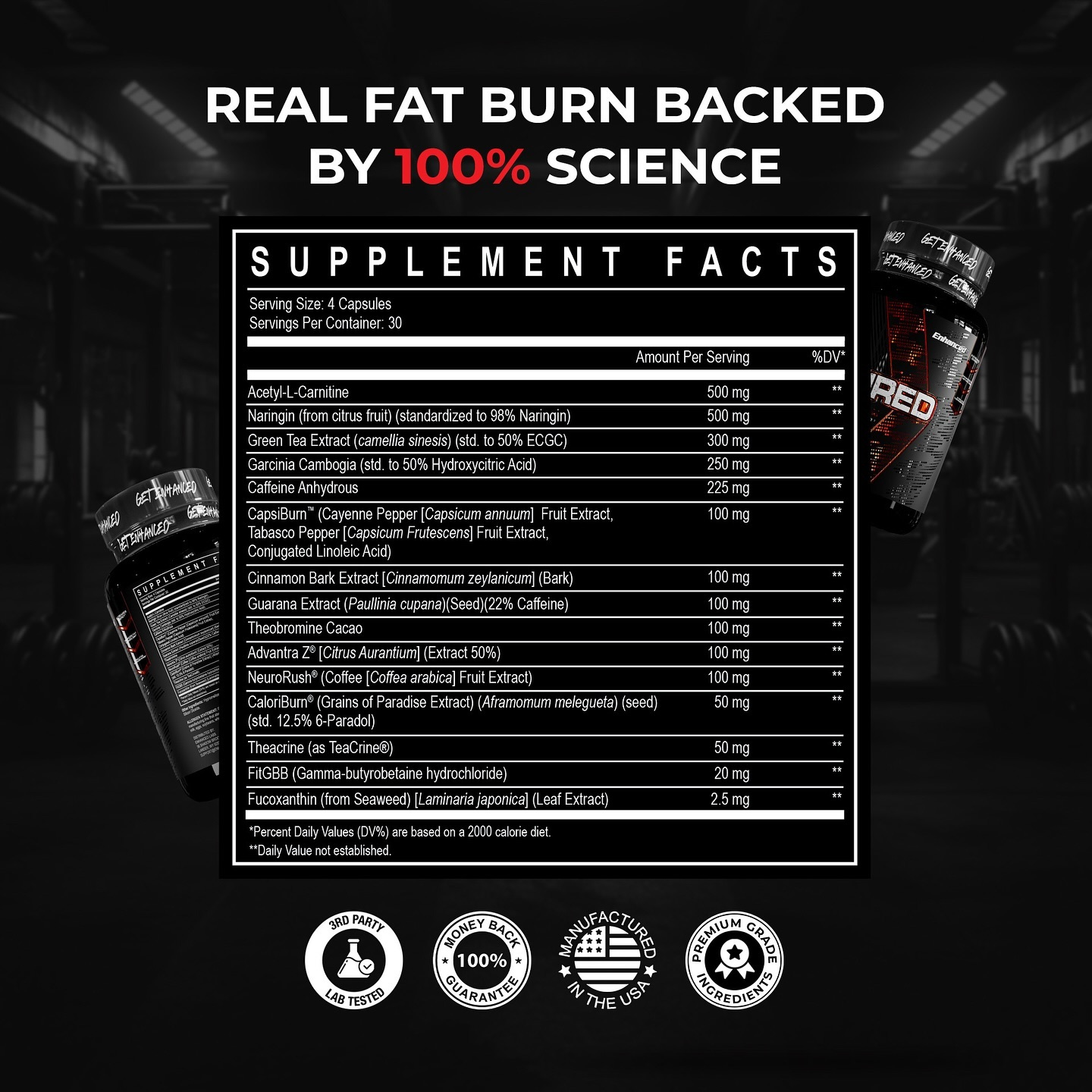

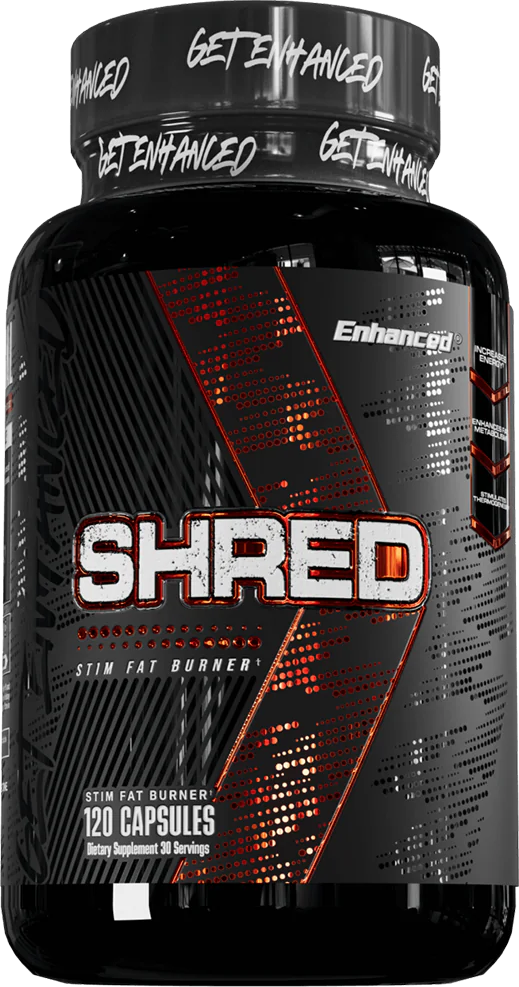
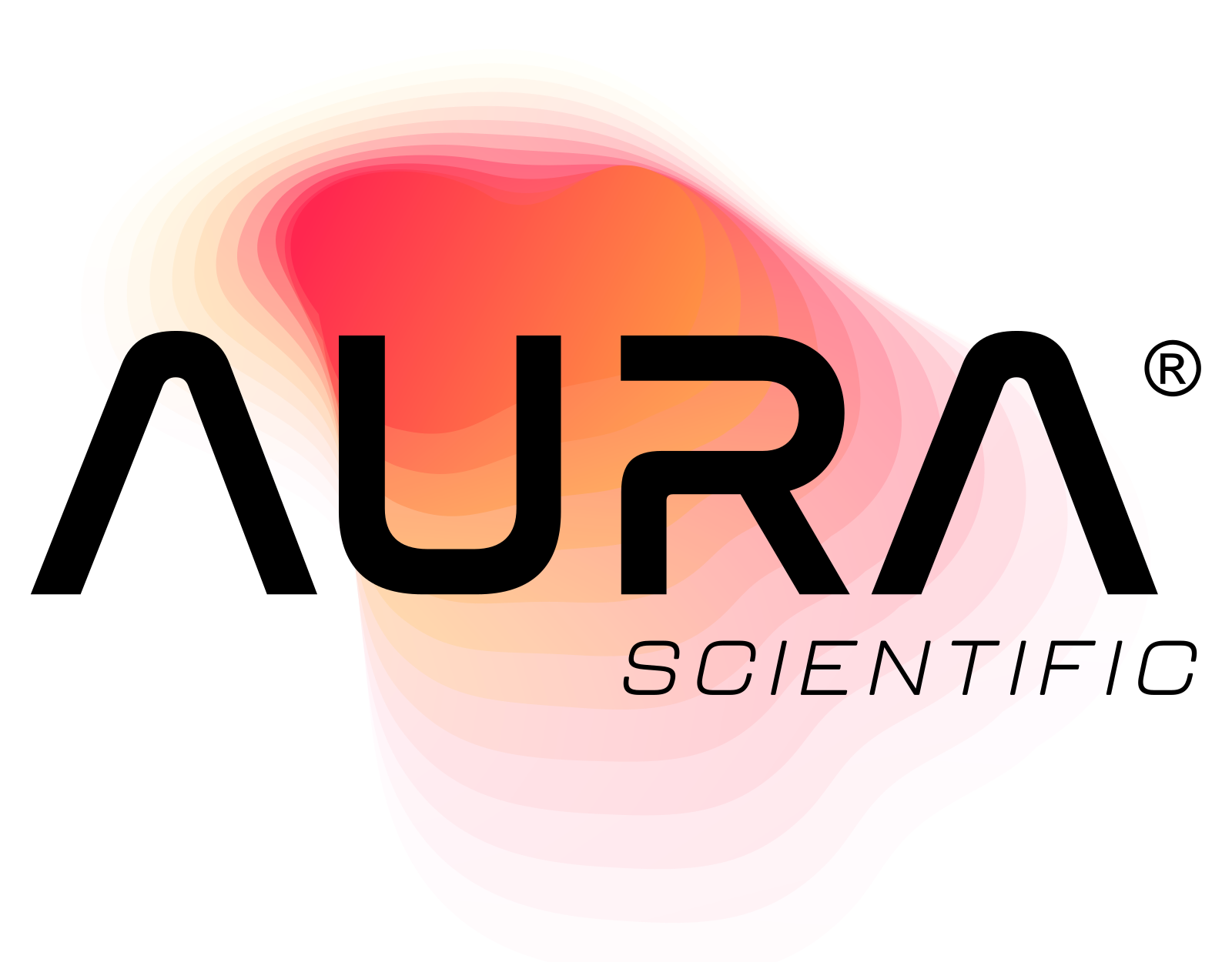
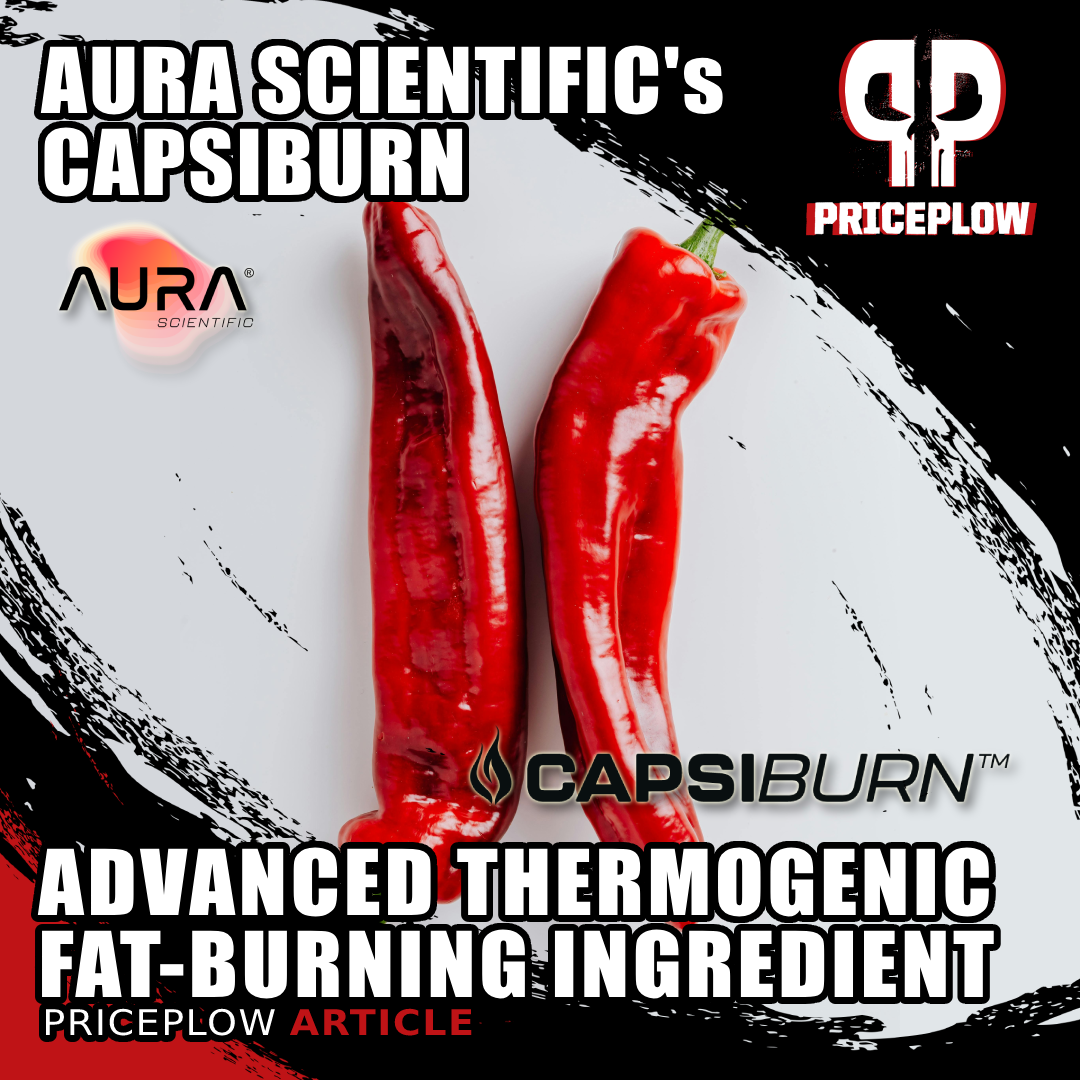
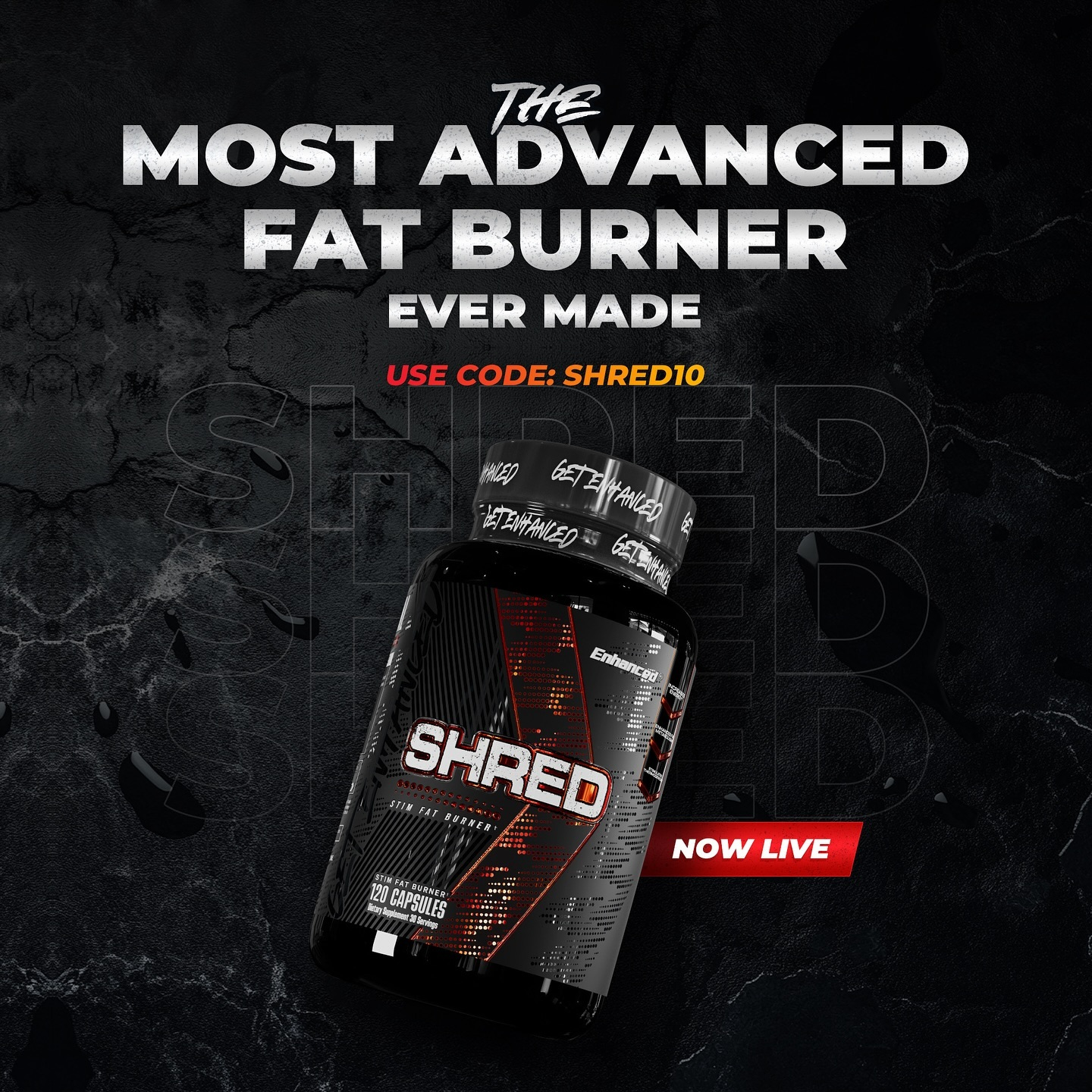

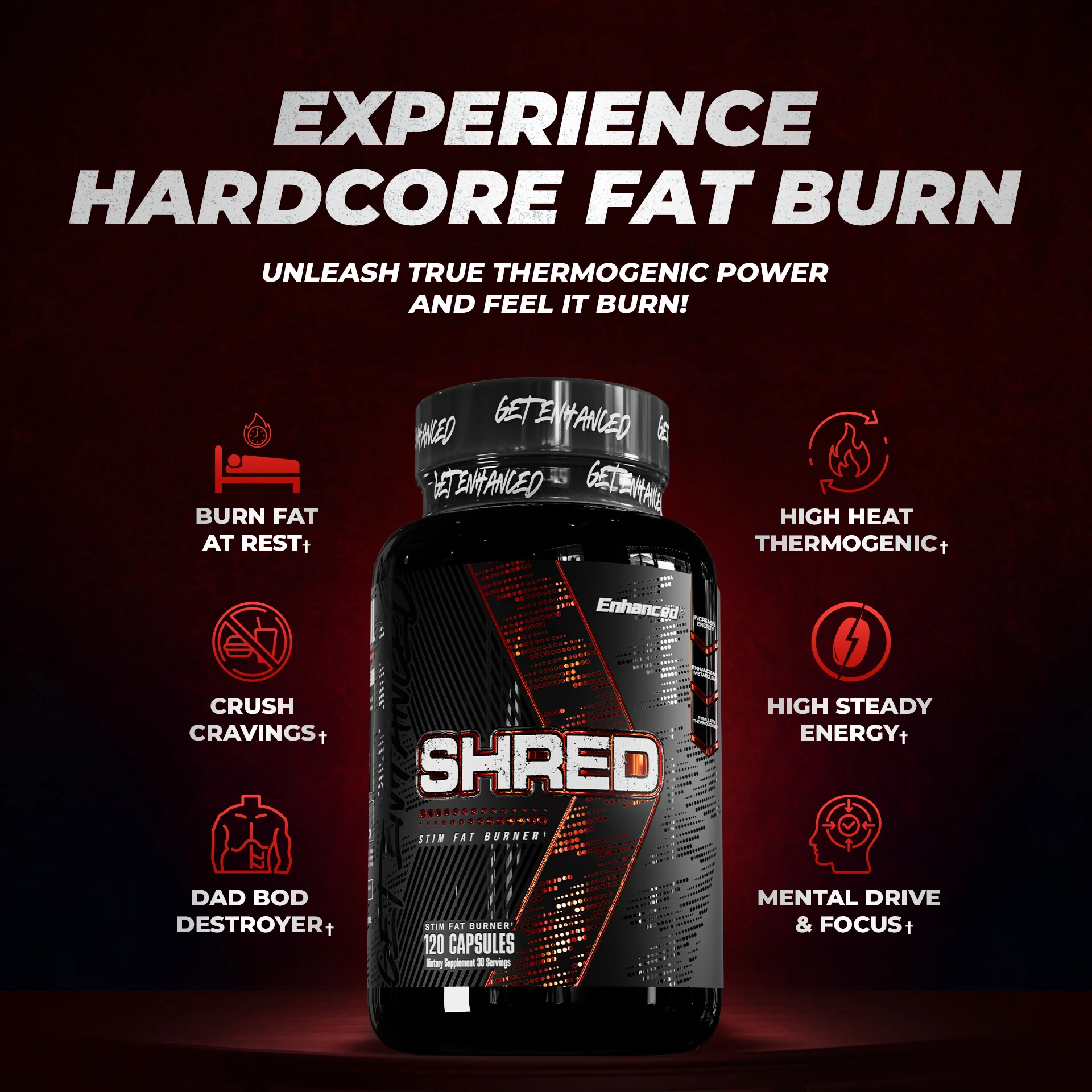
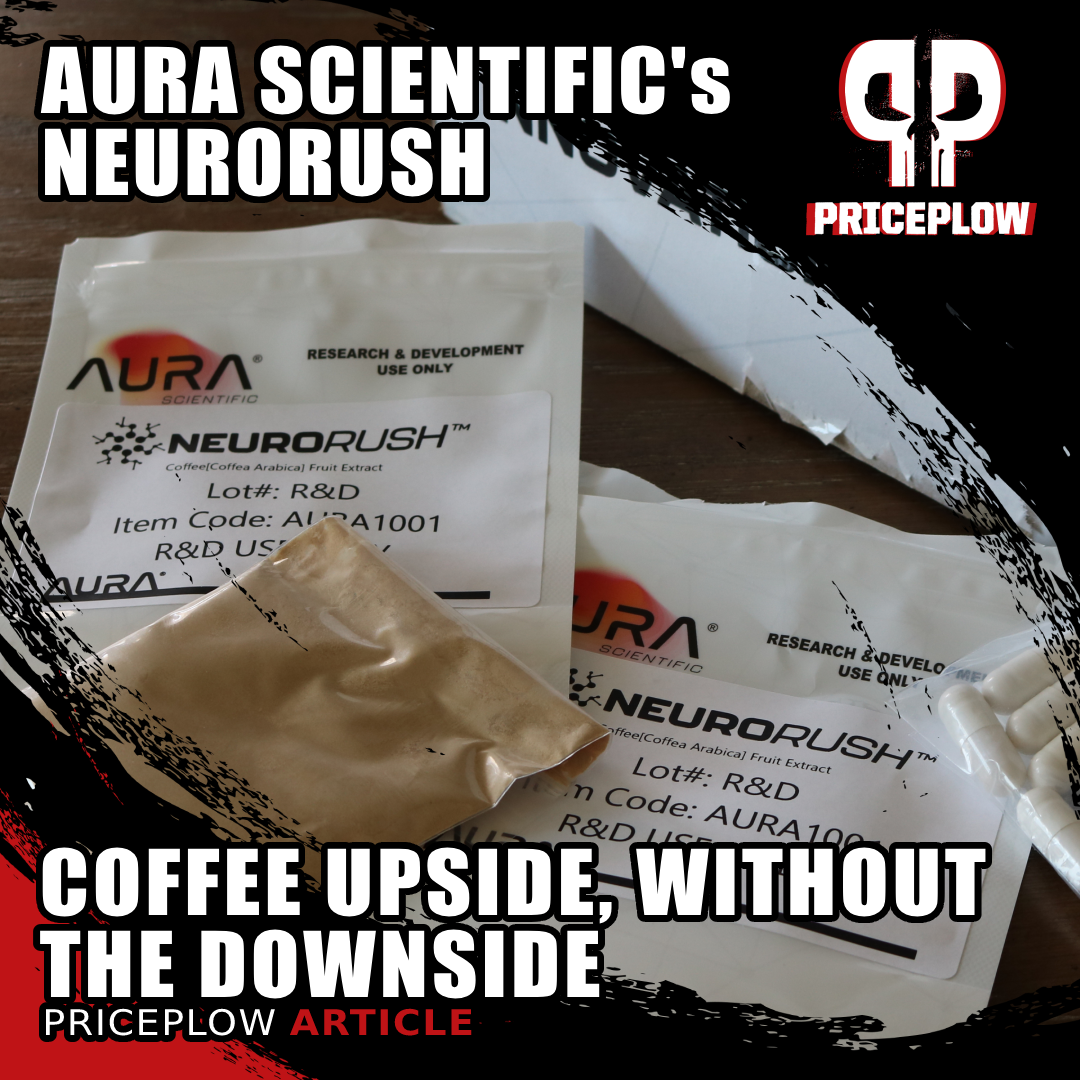

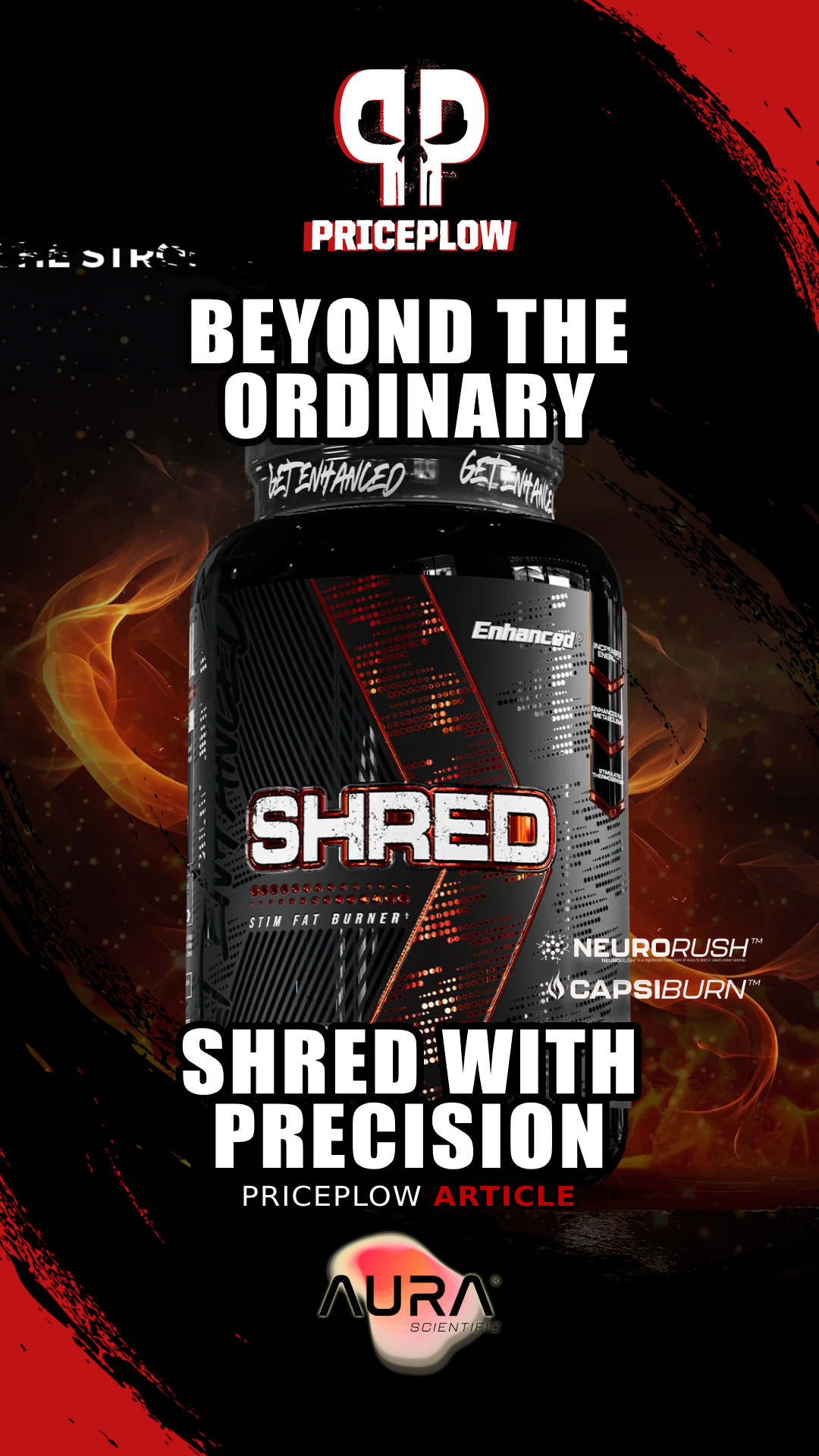

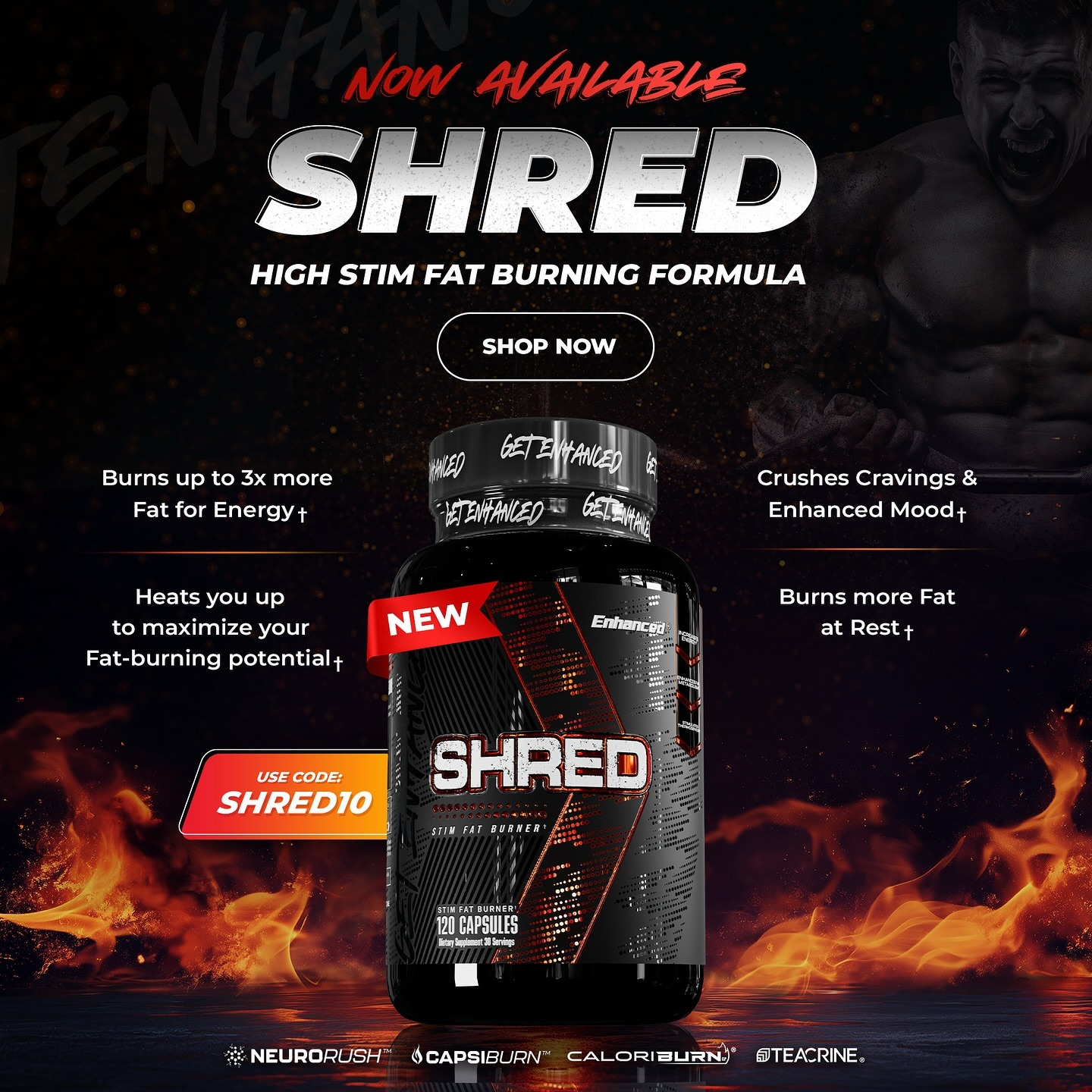


Comments and Discussion (Powered by the PricePlow Forum)